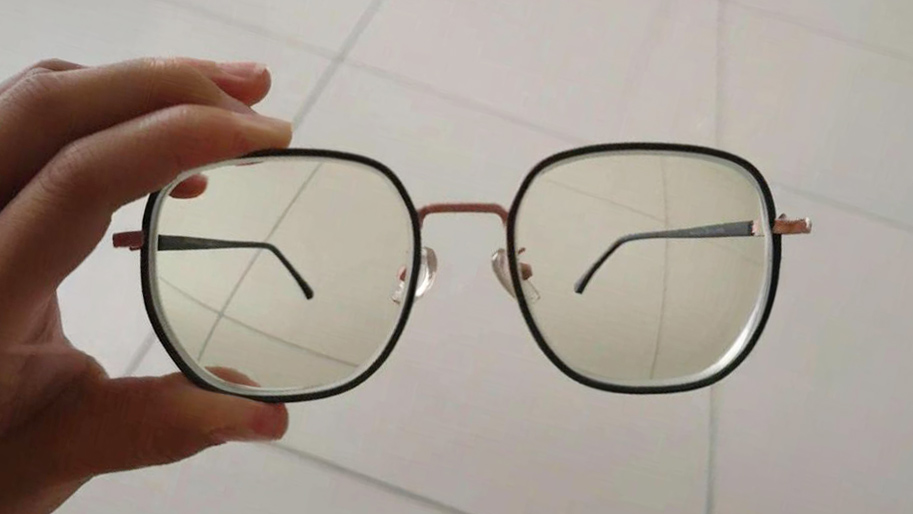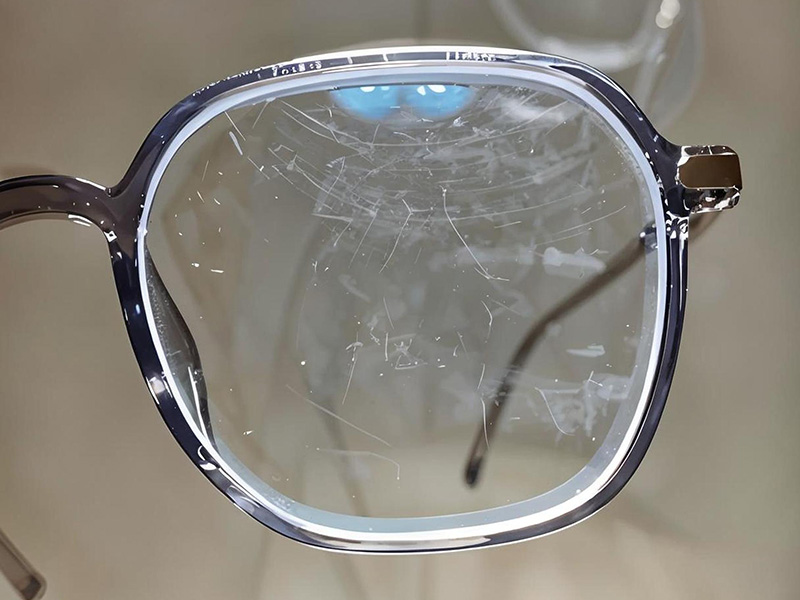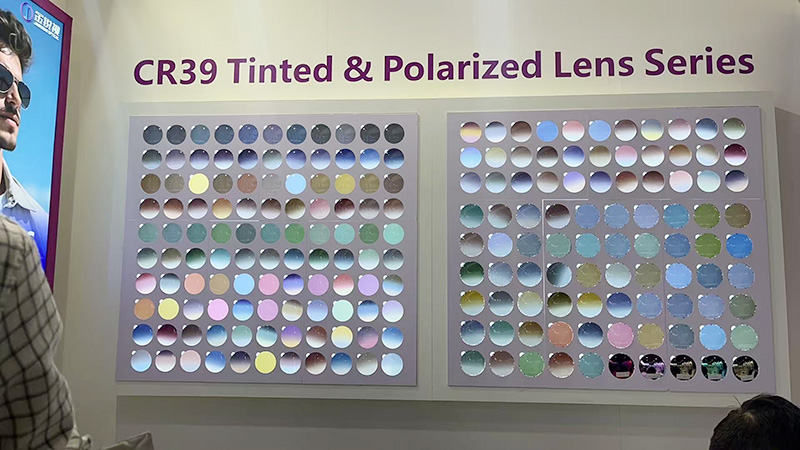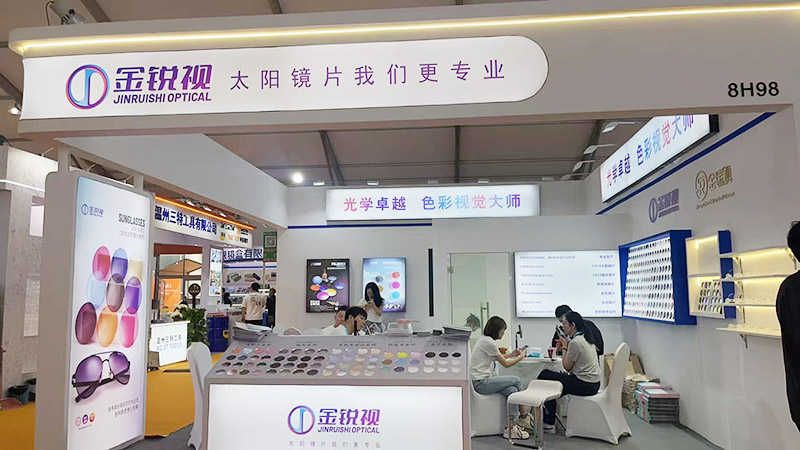Signs of Poor-Quality Eyeglass Lenses
Poor-quality eyeglass lenses not only affect your visual experience but may also lead to long-term chronic eye strain. The issues with these lenses are mainly in three core dimensions: optical performance, material quality, and coating quality. Specifically, they can be clearly identified through the following key signs.
Optical Performance
1. Insufficient clarity: Poor-quality lenses can't produce a sharp image. When you look through them, objects may have blurry outlines and appear "hazy" or "foggy." They report experiencing heightened brightness when switching to high-quality lenses, like Zeiss, indicating that their old lenses likely had significant issues with light transmission.
2. Inaccurate refractive index: The refractive index is a crucial metric for assessing optical performance. Low-quality lenses may not match their stated refractive index. For example, a lens marketed as a high-index 1.74 might actually have a lower index.
3. Severe chromatic aberration: High-quality lenses can effectively control chromatic dispersion, which means focusing light of different colors at almost the same position. Poor-quality lenses, however, tend to have chromatic dispersion. When you look at a bright white light source through the lenses, you might see a colored halo around it. This phenomenon is known as chromatic aberration. For instance, when observing strong light, obvious red, green, blue, or other colored edges may be seen. This happens because the lens refracts different wavelengths of light to varying degrees, which affects visual quality. The lower the dispersion coefficient, the more severe this effect is. This is why a higher refractive index isn't always better.
4. Yellowing and deformation: Poor-quality resin lenses often have unstable monomer materials. Long-term exposure to sunlight or indoor lighting can cause them to oxidize and turn yellow quickly (sometimes in as little as 3-6 months). While yellow can filter blue light, this "non-functional yellowing" will lead to color distortion and reduce light transmission. Additionally, these lenses have poor thermal stability. Leaving them inside a car in summer can cause them to slightly deform, leading to a "shift" in lens power. Wearing lenses like this with an incorrect prescription can cause double vision and dizziness, and will accelerate the deterioration of your eyesight over time.

Material Quality
1. Poor scratch resistance: A notable sign of low-quality lenses is that their surfaces get scratched easily. During daily use, eyeglass lenses may come into contact with various objects such as tissues and clothes. After a period of use, the surfaces of low-quality lenses will be covered with numerous tiny scratches.
2. Weak impact resistance: Low-quality lenses tend to break when subjected to external impacts. For example, they may develop cracks or even shatter when accidentally hitting an object.
3. Low light transmittance: Due to the quality of the material itself or a poor coating process, low-quality lenses often have low light transmittance. This difference becomes more noticeable in low-light environments.

Coating Quality
1. Coating detachment: Lens coatings provide various functions, such as anti-reflection, water resistance, and oil resistance. Low-quality lenses have poor coating adhesion, making the coating prone to peeling.
2. Poor anti-reflection performance: Low-quality lenses do not perform well in terms of anti-reflective properties and produce more reflected light in complex lighting environments, such as looking out through a window in a lighted room or looking at the screen of an electronic device in bright light.
3. Inadequate water and oil resistance: The surface of poor-quality lenses cannot effectively prevent the adhesion of water and oil. For instance, water droplets or oil spots will be formed on the lenses on rainy days or after contacting some greasy substances.
Long-Term Wearing Feedback
• Inferior lenses are easily worn: Obvious scratches may appear on inferior lenses after 1-2 months of use, even with careful daily maintenance. This indicates insufficient lens hardness. By contrast, high-quality lenses have a hard coating on the surface, which provides strong abrasion resistance.
• Poor light transmittance causes eye fatigue: After long-term wear, you may feel "eyes get tired easily" or "lack energy when looking at things". If the lens power is ruled out as the cause, it may be due to the low light transmittance of the lens. Poor-quality lenses contain more impurities, which affect light penetration.
How to Avoid Inferior Lenses? Focus on Two Key Aspects.
1. Refuse the "ultra-low price trap". Don't be fooled by the unbelievably cheap price for a pair of eyeglasses with lenses and frame. On e-commerce platforms, products offering "lenses + frames" for just tens of yuan (e.g., ¥39, ¥59) are almost certainly inferior. The cost of base materials and coatings for high-quality lenses is significantly higher. To achieve such low prices, merchants can only cut corners on manufacturing processes and use recycled materials, ultimately harming your eyes.
2. Prioritize lenses with a brand and anti-counterfeiting features to avoid the risk of eye damage from inferior lenses. Eyeglasses are visual tools for long-term wear. Choosing high-quality lenses not only improves the wearing experience but also protects your eye health. If the quality of lenses is neglected in the pursuit of a low price, it may lead to vision loss and ultimately require more expensive correction instead.











